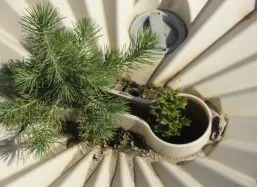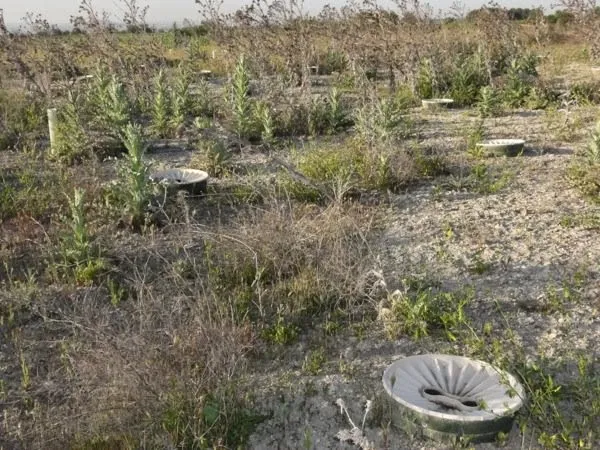By Liliana Usvat
Blog 226-365

Maple – A leaf wound wash or poultice is used to relieve sore eyes and soreness of the breasts for nursing mothers and pregnant women. Bark tea is used to treat kidney infections, the common cold and bronchitis.
Most maples are trees growing to 10–45 m (33–148 ft) height.

Hawthorne – Leaf tea is brewed as a “cardiac tonic” but extended use is known to cause a drop in blood pressure. It is recommended to use it for just two weeks and then take a week off before starting the treatment again.

Hawthorn is an excellent small tree with a widespreading plant form. It has 2-3" clusters of white flowers in spring. Fruit are a bright red, 3/4" pome. They are produced in masses and provide excellent color in late summer and early fall. Foliage is dark green and very glossy. Typical plants of the species have many sharp, 3" long thorns. The tree provides a distinct horizontal accent in the landscape

hawthorn fruit and flowers have medicinal properties useful as a treatment for chronic heart failure. "Hawthorn extract may be used as an oral treatment for chronic heart failure" although the trials did not all measure the same outcomes and several did not designate what conventional treatments the patients also received. Data obtained for meta-analysis was found "suggestive" of a benefit from hawthorn extract when used in combination with conventional treatments.

Hawthorn wood is dense and rot-resistant, and was used for fenceposts and other applications where a moist environment would be encountered. Hawthorn trees are noted as having magical properties in many Neolithic and medieval cultures. Superstitious people today still cling to a belief in faeries and other supernatural beings said to live in close association with the genus
Elm – Bark salve and poultices are used to treat gunshot wounds, chilblain, and on the abdomen to draw out fever. Bark tea is very high in calcium and helps increase the healing of injured bones, heal sore throats, soothe urinary and bowel issues, and to thwart diarrhea.
Elms take many decades to grow to maturity, and as the introduction of these disease-resistant cultivars is relatively recent, their long-term performance and ultimate size and form cannot be predicted with certainty.

The Romans, and more recently the Italians, used to plant elms in vineyards as supports for vines. Lopped at three metres, the elms' quick growth, twiggy lateral branches, light shade and root-suckering made them ideal trees for this purpose.

Elm bark, cut into strips and boiled, sustained much of the rural population of Norway during the great famine of 1812. The seeds are particularly nutritious, comprising 45% crude protein, and less than 7% fibre by dry mass.
Blog 226-365

Maple – A leaf wound wash or poultice is used to relieve sore eyes and soreness of the breasts for nursing mothers and pregnant women. Bark tea is used to treat kidney infections, the common cold and bronchitis.
Most maples are trees growing to 10–45 m (33–148 ft) height.

Hawthorne – Leaf tea is brewed as a “cardiac tonic” but extended use is known to cause a drop in blood pressure. It is recommended to use it for just two weeks and then take a week off before starting the treatment again.

Hawthorn is an excellent small tree with a widespreading plant form. It has 2-3" clusters of white flowers in spring. Fruit are a bright red, 3/4" pome. They are produced in masses and provide excellent color in late summer and early fall. Foliage is dark green and very glossy. Typical plants of the species have many sharp, 3" long thorns. The tree provides a distinct horizontal accent in the landscape

hawthorn fruit and flowers have medicinal properties useful as a treatment for chronic heart failure. "Hawthorn extract may be used as an oral treatment for chronic heart failure" although the trials did not all measure the same outcomes and several did not designate what conventional treatments the patients also received. Data obtained for meta-analysis was found "suggestive" of a benefit from hawthorn extract when used in combination with conventional treatments.

Hawthorn wood is dense and rot-resistant, and was used for fenceposts and other applications where a moist environment would be encountered. Hawthorn trees are noted as having magical properties in many Neolithic and medieval cultures. Superstitious people today still cling to a belief in faeries and other supernatural beings said to live in close association with the genus
Elm – Bark salve and poultices are used to treat gunshot wounds, chilblain, and on the abdomen to draw out fever. Bark tea is very high in calcium and helps increase the healing of injured bones, heal sore throats, soothe urinary and bowel issues, and to thwart diarrhea.
Elms take many decades to grow to maturity, and as the introduction of these disease-resistant cultivars is relatively recent, their long-term performance and ultimate size and form cannot be predicted with certainty.

The Romans, and more recently the Italians, used to plant elms in vineyards as supports for vines. Lopped at three metres, the elms' quick growth, twiggy lateral branches, light shade and root-suckering made them ideal trees for this purpose.

Elm bark, cut into strips and boiled, sustained much of the rural population of Norway during the great famine of 1812. The seeds are particularly nutritious, comprising 45% crude protein, and less than 7% fibre by dry mass.

















